When it comes to spiders, the spiders in Massachusetts will never disappoint. For instance, the deadliest northern black widow can be found here, along with other fascinating spider species that will be discussed below.
What are the spiders in Massachusetts? The most common spiders in Massachusetts are:
- Fishing Spiders—These are semi-aquatic spiders with varying colors, such as brown-cream, black or brown.
- Jumping Spiders—These are small spiders with compact short legs. They are typically black, but other colors are also available, such as brown, gray tan with some pale markings.
- House Spiders—As their name suggests, house spiders are typically found inside houses. They are usually brown in color with white spots on their abdomen and dark rings on their legs.
By reading this guide, you will know more about the spiders in Massachusetts and their different characteristics. So, consider reading on!
Table of Contents
What Are the Common Spiders in Massachusetts?
Some of the common spiders that can be found in Massachusetts are the following:
Fishing Spiders
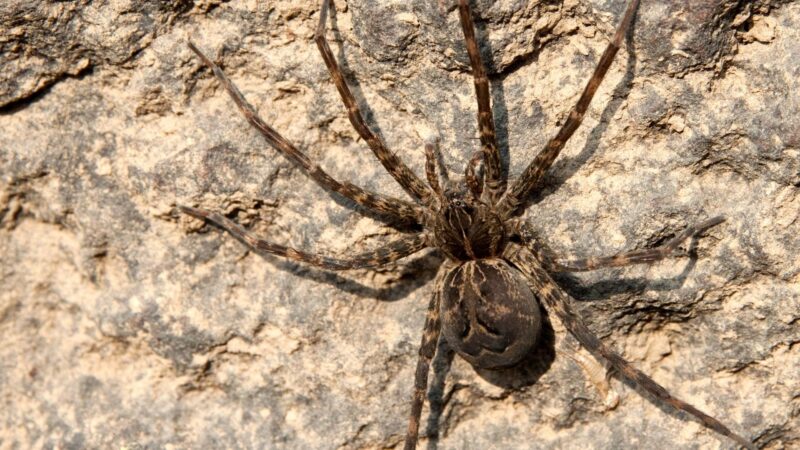
Fishing spiders are semi-aquatic spiders. They prefer living close to the shores of any body of water, such as ponds and lakes.
With that being said, they are commonly found on docks, stones, and boats. But, since they are only semi-aquatic, they can also be seen in places far from aquatic habitats, such as forests, buildings, and houses.
Fishing spiders are also known as Raft Spiders, Wharf Spiders, and Dock Spiders.
- Scientific Name: Dolomedes
- Appearance: Fishing spiders have short, velvet-like hairs that never get wet and allow them to stay still or run on water. They also have a notable pale stripe on both sides of their bodies.
- Color: Brown cream, black or brown
- Lifespan: 1 year for males and 2 years for females
- Habitat: They live close to the shores of ponds, lakes, and other bodies of water. Nonetheless, they can also live in forests, houses, and buildings.
- Size: 7mm to 13 mm for males and 15 to 26 mm in length for females.
- Diet: Aquatic insects, tadpoles, minnows, and small fish.
- Characteristics: Fishing spiders are semi-aquatic and nocturnal spiders. They are typically brown in color with light-brown and black markings, with black and brown-banded rings on their legs. They are often mistaken for wolf spiders, but they can be distinguished through their large size and eyes that are arranged in two horizontal rows.
Jumping Spiders
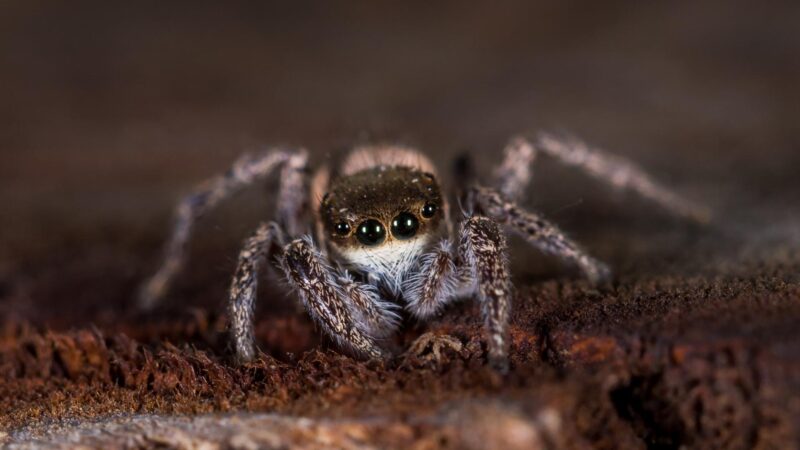
Jumping spiders are small fuzzy carnivores usually 2 mm to 22 mm in length. These spiders are common in grassy fields and can sometimes be found on outdoor walls and fences.
It’s best to avoid being bitten by this tiny spider as it can still hurt with swelling, followed by chills, nausea, fever, headaches, and even vomiting. However, its bite is in the low-risk category, so there’s no need to panic.
- Scientific Name: Salticidae
- Appearance: Jumping spiders are usually black in color, but there are also other colors like gray, brown, and tan with green metallic fangs. They have compact and short eight legs, which they use in jumping.
- Color: Tan, brown, or gray with pale white, yellow, gray, blue, red, or green markings
- Lifespan: 6 months to 2 years
- Habitat: Tropical forests, temperate forests, mountainous regions, scrubland, intertidal zones, and deserts.
- Size: 2 mm to 22 mm in length
- Diet: Flies, crickets, mealworms, cockroaches, moths, and other spiders
- Characteristics: Jumping spiders are venomous, and venom can paralyze their insect prey before eating them up.
House Spiders
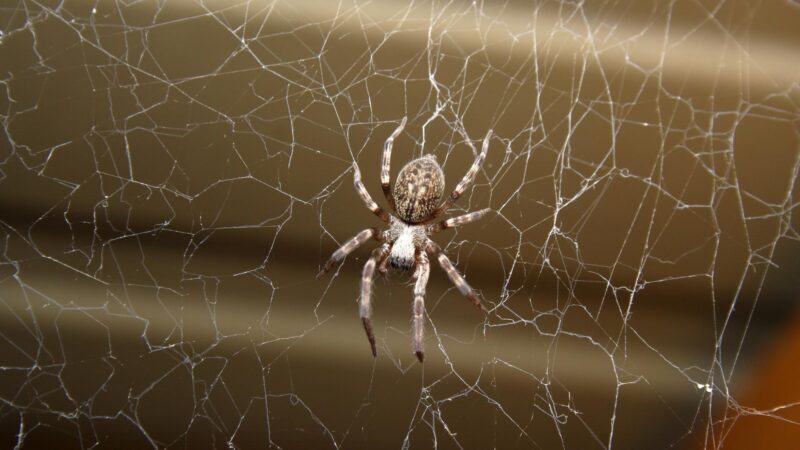
As their name suggests, the house spiders are the spiders that you usually see in the nooks and corners of your home. They’re little creatures that live off of mosquitoes, flies, fleas, and ants.
Although their bites contain venom, they’re deemed harmless to humans and pets.
- Scientific Name: Achaearanea tepidariorum
- Appearance: House spiders have two dark stripes on their thorax and head with a sphere-shaped abdomen and light beige and brown markings. The color of their bodies varies from gray-brown to dark-brown, possessing banded legs.
- Color: Dark-brown and gray-brown
- Lifespan: 1 year
- Habitat: Attics, barns, basements, backyards, gardens, sheds, and any other structures made by man
- Size: 5 mm to 8 mm in length
- Diet: Earwigs, cockroaches, flies, fleas, moths, mosquitoes, and ants.
- Characteristics: The most notable characteristic of house spiders is the dark rings on their legs. The color of their bodies is either gray-brown or dark brown with an orange tint on the legs for males and yellow for females.
Grass Spiders
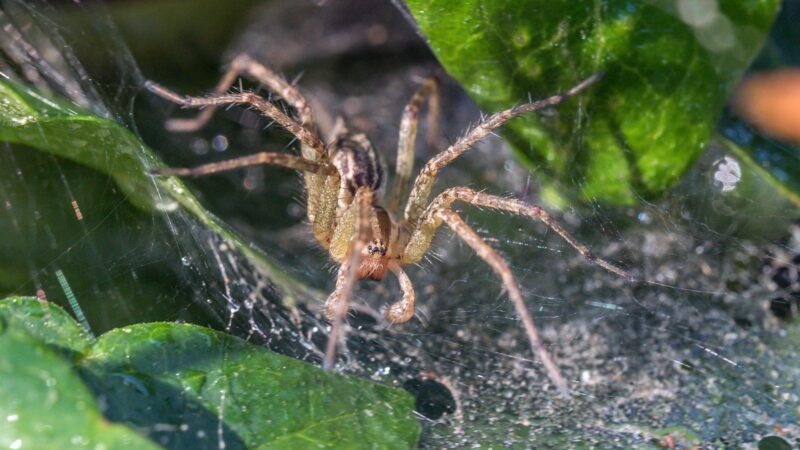
Grass spiders are among the common spiders that you can spot in Massachusetts. Their webs are large, relatively concave, and sheetlike with a funnel on one side, often more noticed than the spiders.
Their webs are often found on weeds, grasses, bushes, brush piles, and fencerows.
You can identify these spiders by their extremely elongated rear spinnerets and outer markings on the abdomen and carapace, usually yellow-brown to brown. In addition, on both sides of their carapace, you can see the very thin lines.
Furthermore, their abdomen is darker in color than the carapace, possessing a lighter median band and occasionally a scalloped edge.
- Scientific Name: Agelenopsis
- Appearance: The male grass spiders are smaller than the females at 9 mm to 18 mm in length. Meanwhile, the females measure from 10 mm to 20 mm. Despite their size difference, they both have a hard carapace and yellowish-brown coloring with two longitude stripes and dark abdomen color.
- Color: Brownish-yellow
- Lifespan: 1 year
- Habitat: Low-lying bushes, grass, weeds, fencerows, brush piles, etc.
- Size: 9 mm to 18 mm for males and 10 mm to 20 mm for females
- Diet: Aphids, moths, and grasshoppers
- Characteristics: One of the determining characteristics of grass spiders is their immensely elongated back spinnerets and outer markings on the abdomen and hard carapace.
Orb Weavers
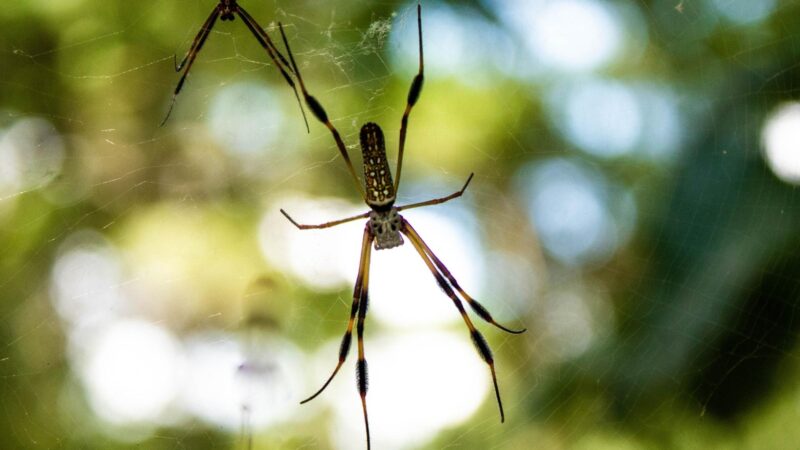
Orb weavers are typically bright-colored spiders with spiny and hairy legs and large irregular abdomens. These spider species are nocturnal and possess a gray or brown color. They are most frequently found in forests, fields, and gardens.
- Scientific Name: Araneidae
- Appearance: Most orb weavers have a bright color with spiny or hairy legs and a large abdomen overlapping the back edge of their cephalothorax.
- Color: Orange, white, or yellow with red markings.
- Lifespan: 1 year
- Habitat: Grassland, garden, and woodland habitats
- Size: 6 mm to 20 mm
- Diet: Moths, flies, wasps, bees, small beetles, mosquitoes, etc.
- Characteristics: Since various Orb Weavers species exist, their color shape and size usually vary, but they primarily possess bright colors. Most of them are bulky, grey spiders or reddish-brown spiders with almost triangular abdomens, a leaf-shaped mark on their fat, and two prominent humps in the front.
What Is the Biggest Spider in Massachusetts?
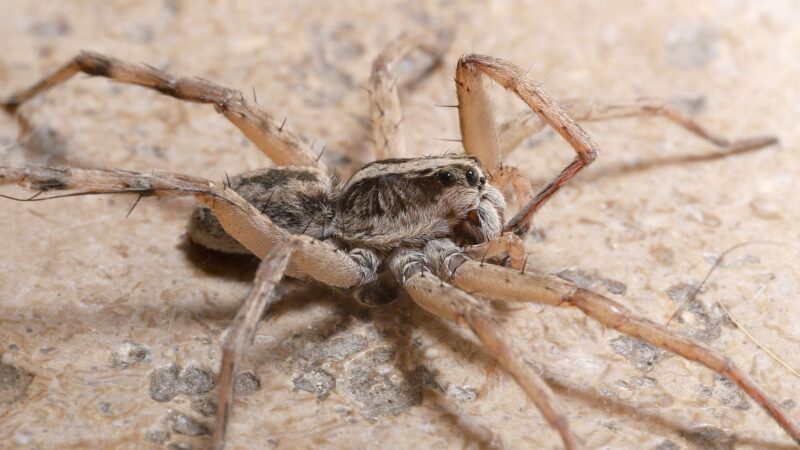
The biggest spider in Massachusetts is the species called Carolina wolf spider. Males from this species measure from 18 mm to 20 mm, while females can reach up to 22 mm to 35 mm in length.
You can identify them with their mottled brown color and dark undersides. These spiders are known to adapt very well to various climatic conditions and are often found on the sandy coastlines of Massachusetts.
What Are the Harmful Spiders in Massachusetts?
Some spider bites are contains serious venoms, so it’s best to consult a doctor right away if bitten. It’s also essential to identify the spider that bit you to treat the bites effectively.
Here are some of the spiders in Massachusetts that are worth noting for being harmful:
Yellow Sac Spider
The yellow sac spider’s bite is quite painful but gradually. At first, you may not even feel its bite, but after 2 to 8 hours, its bite will be felt more with swelling that can inflame into a 10 cm surface lesion that will require immediate medical attention.
Wolf Spider
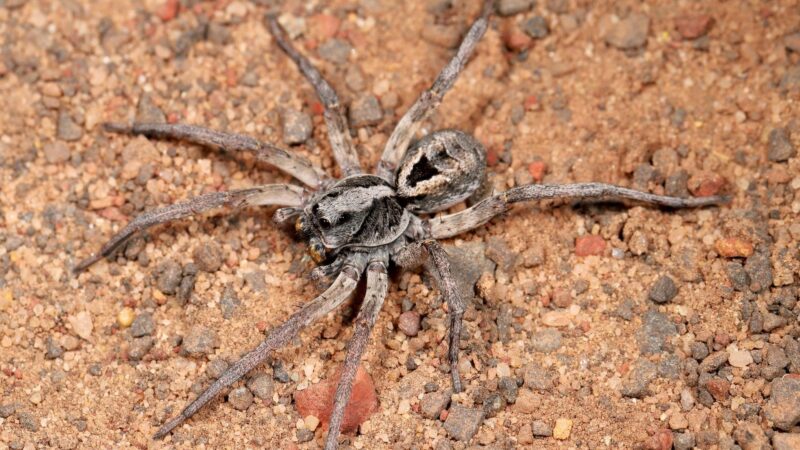
Wolf spiders are usually seen in tall grasses, spinning silk exclusively for shelter and egg sacs. They hunt down their prey with their speedy legs. They have furry bodies—which help them land on their common name.
Additionally, they have excellent eyesight, allowing them to hunt on the ground at a fast speed. Their bites can tear the skin and induce pain, swelling, and redness.
Also, you may encounter swollen lymph nodes due to the bite. For many people, recovery can take up to 8 to 10 days. However, their bites usually don’t need medical treatment except if you are allergic to spider bites.
Cellar Spider
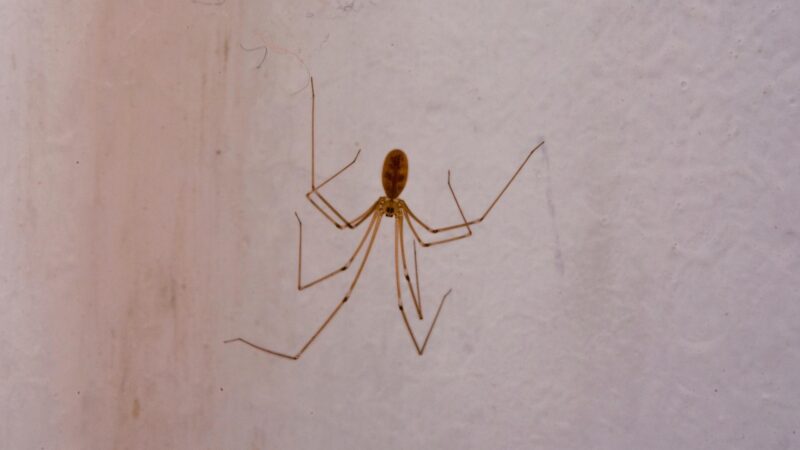
Cellar spiders are long-legged with elongated body frames—often mistaken for Daddy Long Legs. Although they’re not dangerous, they can cause nuisance at home since they are difficult to remove.
They also still bite and have venom, but not strong enough to tear off the skin and affect people.
Funnel-Web or Grass Spider
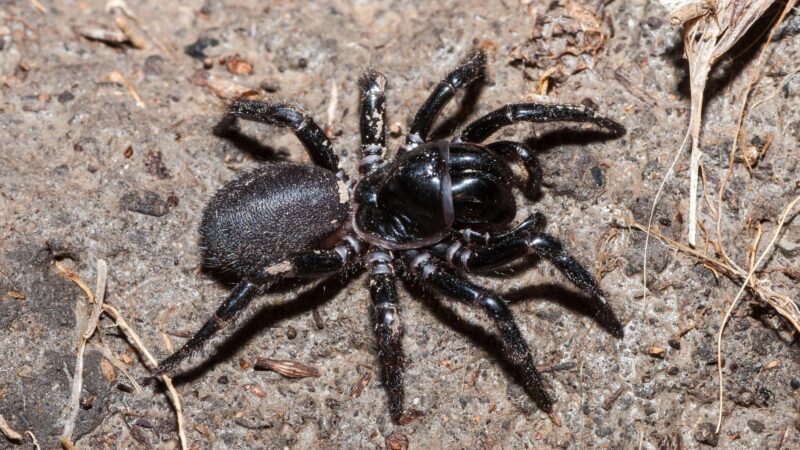
Funnel-web or grass spiders are venomous, but not the poisonous type of spiders. They present only a little to no threat to humans since they prefer to stay in their sheet-like webs, where they wait for their victims patiently.
These spiders only have small fangs and can only cause minimal irritation when they bite humans.
Frequently Asked Questions
Do Jumping Spiders Live in Massachusetts?
Jumping spiders are very common sights in Massachusetts, but they can also be seen anywhere in the world.
Are Wolf Spiders in Massachusetts?
These hairy wolf spiders are another common spider species in Massachusetts. Their color varies from gray to brown and is often found in houseplants, windows, doors, under rocks, and gardens.
Does Massachusetts Have Black Widow Spiders?
Black widows can be found in Massachusetts but are not as common as other spider species. In fact, these spiders are only mostly seen on the Tuckernuck Island in Massachusetts.
Are There Tarantulas in Massachusetts?
There are no tarantulas in Massachusetts. They are only found among the 12 states in the southwestern U.S.A and some pet stores.
Summary
There are diverse species of spiders in Massachusetts, and some of them are listed in this guide. So, if you ever want to familiarize the spiders in Massachusetts at heart, just refer to this guide again and have some fun learning!
List of Sources
Northern Black Widow Spider (Latrodectus Variolus)